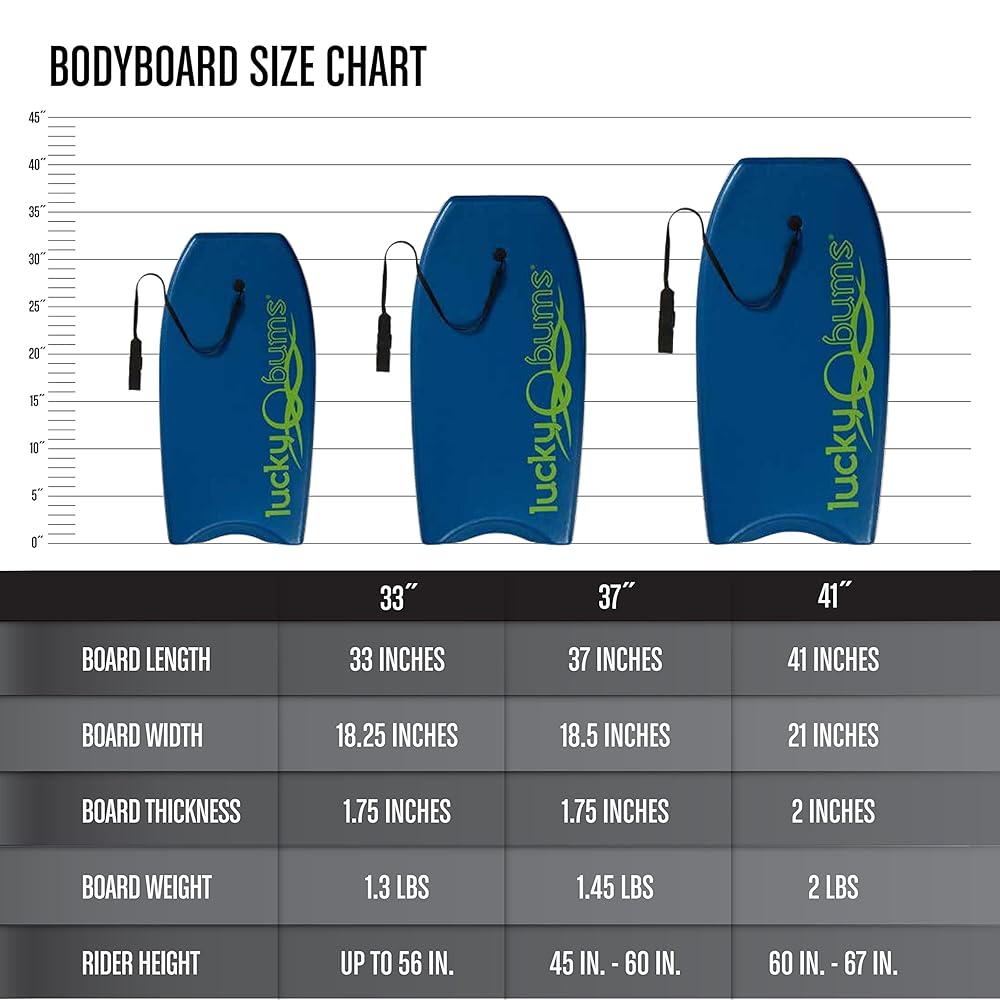Choosing the right bodyboard size is a vital part of your progress as a rider. If you have the ideal bodyboard features and benefits for your abilities and needs, it would only ensure that your rides are fun, and at the same time, epic. Now that you have finally decided to buy yourself your first bodyboard, you might be troubled by what size you should be getting. To add, you may also wonder which bodyboard suits your needs and preferences.
To make an intelligent buying decision, your bodyboard should fit these three criteria: your height, level of sports knowledge, and weight. Therefore, in this post, we will be discussing everything you need to know about choosing the right bodyboard size. After all, the bodyboard might just be one of your most prized possessions, as well as your best traveling companion. Read on if you want to know more.
How to Choose the Right Bodyboard
There could be several variations between bodyboard manufacturers and their designs, all of which play a major role as to how a bodyboard performs for you. Thankfully, we have prepared this guide to help you decide which bodyboard suits you best. We also recommend that you get to know these bodyboards first before you use your hard-earned money to pay for it.
Before we proceed with the discussions on how to choose the right bodyboard size, we first should talk about the main features of a bodyboard. Generally, bodyboards are made of these two core materials: polypropylene foam (PP) and dow polyethylene foam (PE). When compared, PE is flexible, heavier, and perfect for low temperature. Meanwhile, PP is more lightweight and stiffer, especially in cold water conditions.
Stringers are the latest additions to modern bodyboards, which increases strength to its core. Generally, these stringers are removable, especially if you are engaging inwave riding conditions. Don’t worry because you can always reattach it for other rides.
Bodyboard tails, on the other hand, are the water’s last exit point before they leave the board’s bottom. Those that have bat and crescent shapes are common among modern-day bodyboards. To differentiate, bat-type tails loose while crescent-type tails tend to stick the bodyboard to the wave.
Width is also a factor that needs to be considered when choosing the right bodyboard for you, as it dictates its performance. In case you don’t know, wider boards exhibit greater buoyancy; therefore, they might be a lot more challenging to turn. Modern models, however, are narrower, allowing better performance and speed turns.
Lastly, take time to consider the bodyboard’s thickness. Latest bodyboard models have grown slimmer, around 51mm, which effectively increases maneuverability, as well as a better response in terms of your quick movements.
Bodyboard Sizing and Dimensions
As mentioned in the earlier section, the bodyboard’s dimensions greatly affect its performance in the water. There could be several slight variations that have the capability to harness differences in elements of wave riding, which may be able to suit riders with varying shape or weight.
The widest point of a bodyboard can be measured rail to rail. This affects both the board’s turning ability, as well as floatation. For instance, the wider the board is, the more floatation will be offered but might be more difficult to turn. Over the last decade, bodyboards have grown narrower, most of them under 22 inches, which has the capability to accommodate sharper and harder turns, especially in critical situations.
The nose to wide point, on the other hand, is the distance from the bodyboard’s nose to its widest point. This measurement determines the bodyboard’s overall shape and template. A higher wide point has the capability to create more surface area, especially around the nose. In addition, it offers a lot more stability. The reason is that you use this section to drive and maneuver. Meanwhile, a lower ride point only narrows this area, which may also increase its maneuverability.
Bodyboard Size
Probably the most important factor when choosing the bodyboard’s size is its length. It is very important that you get this right. If your bodyboard is too big, then you might experience difficulty in controlling the board. You may also find it challenging to paddle out effectively. To add, your knees tend to hit the tail while you pump using your fins. If your board is too short, however, it will not be able to offer the appropriate floatation. Thus, it will only slow down your riding, as well as make it difficult for you to catch some waves.
You may refer to the chart below to determine which bodyboard size is right for you:
To sum, if your body type falls under tall, skinny, and lightweight, then you might want to consider a tall, narrow, and thin bodyboard. Meanwhile, if you are tall and has an average weight, then a taller and average bodyboard would be perfect for you.
Conclusion
Choosing the right bodyboard size may be very challenging, especially if you are only starting out with this water sport. However, with this guide, we do hope that you will be able to come to a decision on which bodyboard size to purchase. We do believe that we have provided you with all the necessary information to make the decision-making a lot easier for you. Just remember to take into consideration factors that include your body shape and size, as well as your abilities.



Không có nhận xét nào:
Đăng nhận xét